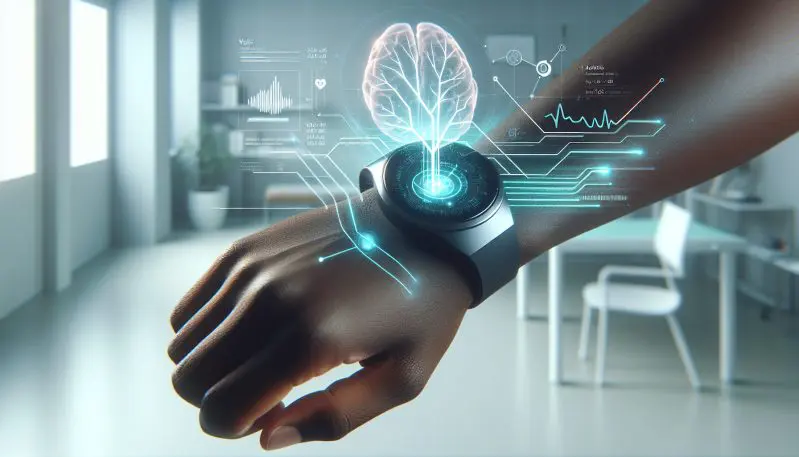Artificial Intelligence (AI) has seamlessly integrated into our daily lives, often without us even realizing it. From the smartphones in our pockets to the smart speakers in our homes, AI-powered personal devices are transforming the way we live, work, and interact with the world. While these advancements offer unparalleled convenience and personalization, they also raise significant concerns about personal privacy and data security.
In this blog, we will explore what AI in personal devices entails, how these technologies assist us, the ways they handle personal information, the benefits and threats they pose, government regulations surrounding personal privacy, and how privacy activists are responding to this rapidly evolving landscape.
What Is AI in Personal Devices?
AI in personal devices refers to the integration of artificial intelligence technologies into consumer electronics that we use on a daily basis. These devices leverage machine learning algorithms, natural language processing, and data analytics to perform tasks that traditionally required human intelligence.
Examples include:
• Smartphones: AI enhances features like facial recognition, voice assistants, camera enhancements, and predictive text.
• Virtual Assistants: Devices like Amazon Echo’s Alexa, Google Home’s Assistant, and Apple’s Siri respond to voice commands and perform tasks.
• Wearables: Smartwatches and fitness trackers monitor health metrics, provide personalized feedback, and even detect irregular heart rhythms.
• Smart Home Devices: AI controls lighting, thermostats, security systems, and appliances, often through voice commands or automation.
• Laptops and Tablets: AI aids in organizing files, recommending content, and enhancing security features.
How They Help
AI-powered personal devices offer a multitude of benefits that enhance user experience, increase efficiency, and provide personalized services.
1. Virtual Assistants and Voice Commands
Voice-activated assistants like Siri, Alexa, and Google Assistant perform tasks such as setting reminders, sending messages, making calls, and answering queries.
• Convenience: Hands-free operation allows multitasking.
• Accessibility: Assists users with disabilities by providing voice control over devices.
• Information Access: Quickly retrieves information from the internet.
2. Personalized Recommendations
AI algorithms analyze user preferences to suggest music, movies, products, and services.
• Entertainment: Platforms like Netflix and Spotify curate content based on viewing and listening habits.
• Shopping: E-commerce sites recommend products aligned with previous purchases and browsing history.
• Content Curation: News apps and social media platforms tailor feeds to user interests.
3. Health and Fitness Tracking
Wearables like the Apple Watch and Fitbit monitor physical activity, sleep patterns, and vital signs.
• Health Monitoring: Tracks heart rate, steps, calories burned, and sleep quality.
• Preventive Care: Detects irregularities such as arrhythmias and alerts users.
• Goal Setting: Encourages healthier lifestyles through personalized goals and reminders.
4. Home Automation
Smart home devices automate and control household functions.
• Energy Efficiency: Adjusts thermostats and lighting to save energy.
• Security: Monitors home security systems and cameras remotely.
• Convenience: Automates routine tasks like brewing coffee or starting laundry.
5. Productivity Enhancements
AI improves efficiency in communication and organization.
• Predictive Text and Smart Replies: Suggests words or phrases to speed up typing.
• Email Filtering: Sorts important emails and filters out spam.
• Calendar Management: Automatically schedules meetings and sends reminders.
How They Handle Personal Information
AI personal devices operate by collecting and processing vast amounts of personal data. Understanding how this data is handled is crucial for assessing privacy implications.
Data Collection
• Voice Recordings: Virtual assistants capture voice commands, which may be stored for processing and improving services.
• Usage Patterns: Apps monitor how users interact with devices and services.
• Location Data: GPS and location services track movements to provide location-based services.
• Biometric Data: Facial recognition and fingerprint scanners collect unique physical identifiers.
• Health Information: Wearables gather sensitive health metrics.
Data Processing
• On-Device Processing: Some data is processed locally on the device, enhancing privacy and reducing latency.
• Cloud Computing: Data is often sent to cloud servers for more complex processing, analysis, and storage.
Privacy Policies and User Agreements
Companies outline how they collect, use, and share data in their privacy policies.
• Consent: Users typically consent to data collection when accepting terms of service.
• Data Usage: Policies explain whether data is used for personalization, shared with third parties, or used to improve services.
• Opt-Out Options: Some services allow users to limit data collection or delete stored data.
Security Measures
• Encryption: Data is encrypted during transmission and storage to protect against unauthorized access.
• Authentication Protocols: Biometric authentication adds a layer of security.
• Regular Updates: Software updates address security vulnerabilities.
Benefits and Threats
Benefits
1. Enhanced Convenience and Efficiency
• Automation of Routine Tasks: Saves time and reduces effort.
• Quick Access to Information: Immediate answers to queries enhance productivity.
2. Personalized Experiences
• Tailored Content: Increases satisfaction by aligning services with user preferences.
• Adaptive Learning: Devices learn from user behavior to improve functionality.
3. Improved Health and Well-being
• Health Insights: Provides valuable data for personal health management.
• Emergency Alerts: Can detect falls or medical emergencies and notify contacts.
4. Accessibility
• Assistive Technologies: AI aids individuals with visual, hearing, or motor impairments.
Threats
1. Privacy Invasion
• Data Overreach: Excessive data collection may infringe on personal privacy.
• Unintended Recording: Devices may capture conversations inadvertently.
2. Data Breaches and Security Risks
• Hacking: Personal data is vulnerable to cyberattacks.
• Identity Theft: Sensitive information can be exploited for fraudulent activities.
3. Potential Misuse of Data
• Third-Party Sharing: Data sold to advertisers or other entities without explicit consent.
• Surveillance Concerns: Possibility of unauthorized monitoring by corporations or governments.
4. Erosion of Anonymity
• Behavioral Profiling: Detailed user profiles can be created, diminishing anonymity.
Government Regulations About Personal Privacy
Governments worldwide are enacting regulations to protect personal privacy and govern how companies handle personal data.
General Data Protection Regulation (GDPR) – European Union
• Data Protection Principles:
• Lawfulness, Fairness, and Transparency: Data must be processed legally and transparently.
• Purpose Limitation: Collected for specified purposes.
• Data Minimization: Only necessary data should be collected.
• User Rights:
• Right to Access: Users can request access to their data.
• Right to Erasure: Users can request deletion of personal data.
• Penalties: Severe fines for non-compliance, up to 4% of global annual turnover.
California Consumer Privacy Act (CCPA) – United States
• Consumer Rights:
• Right to Know: Consumers can know what personal data is collected.
• Right to Delete: Request deletion of personal information.
• Right to Opt-Out: Decline the sale of personal data.
• Business Obligations:
• Transparency: Must disclose data collection and sharing practices.
• Non-Discrimination: Cannot deny services to consumers exercising their rights.
Other Notable Regulations
• Personal Information Protection Law (PIPL) – China
• Personal Data Protection Bill – India (proposed)
• Privacy Act – Australia
Impact on AI Personal Devices
• Compliance Requirements: Companies must adjust practices to comply with regional laws.
• Data Localization: Some laws require data to be stored within the country.
• Enhanced User Control: Regulations empower users to manage their data.
How Personal Privacy Activists Are Taking It
Privacy activists play a crucial role in advocating for stronger data protection measures and raising public awareness.
Concerns Raised
• Transparency: Demand for clearer disclosure of data collection and usage practices.
• Consent Mechanisms: Push for more explicit and informed user consent.
• Surveillance Risks: Highlight potential for mass surveillance through personal devices.
• Vulnerable Populations: Emphasize risks to marginalized groups who may be disproportionately affected.
Notable Incidents
• Smart Speaker Eavesdropping: Reports of devices recording conversations without activation prompts.
• Data Misuse Scandals: Instances like the Cambridge Analytica case where personal data was exploited.
Activism Efforts
• Advocacy for Legislation: Lobbying for stricter privacy laws and regulations.
• Public Awareness Campaigns: Educating consumers about privacy rights and risks.
• Legal Actions: Filing lawsuits against companies violating privacy norms.
Recommendations from Activists
• Default Privacy Settings: Devices should have privacy-protective settings enabled by default.
• On-Device Processing: Encourage processing data locally to minimize data exposure.
• Independent Audits: Call for third-party assessments of company privacy practices.
Conclusion
AI in personal devices offers remarkable benefits that enhance convenience, personalization, and accessibility. However, these advantages come with significant responsibilities and risks related to personal privacy and data security. As technology continues to advance, it is imperative for companies to prioritize transparent and ethical data handling practices.
Government regulations are stepping in to protect consumers, but users must also stay informed and exercise control over their personal information. Privacy activists play a vital role in advocating for stronger protections and holding companies accountable.
The intersection of AI and personal devices represents a delicate balance between innovation and privacy. By fostering open dialogue, implementing robust safeguards, and respecting user autonomy, we can harness the power of AI while safeguarding the fundamental right to privacy.
Key Takeaways:
• Awareness is Crucial: Understand how your devices collect and use personal data.
• Exercise Your Rights: Utilize privacy settings and be aware of legal rights under regional regulations.
• Demand Transparency: Support companies and policies that prioritize ethical data practices.
• Stay Informed: Keep up with developments in AI technology and privacy advocacy.
By being proactive and engaged, we can navigate the evolving landscape of AI in personal devices, enjoying the benefits while mitigating the risks.











